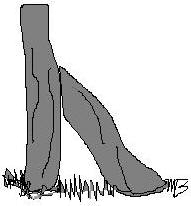To serve you better, we've assembled a list of our customers' most frequently asked questions. If you don't find your answer here, feel free to contact us.
How could I have used this much water?
You may not have - the numbers on your meter may have been transposed or hard to read. You could possibly have a leaky toilet or faucet that's difficult to detect. Just call the office and we'll work with you to solve the problem.
What do I do if I am experiencing low pressure?
Check your meter and the surrounding area for possible leaks. Next, call our office and report low pressure for your area.
Why is my water discolored?
A repair could have been completed recently allowing air to enter the line, causing the milky look.
What chemicals does our utility district add to the water?
Only chemicals that are approved by the National Safety Foundation for treatment of drinking water.
My water tastes, looks, and smells funny. Is it safe to drink?
All public water systems are required to maintain a minimum chlorine level of 0.2 mg/L (tested at the end of each line) by state law. Systems that use chloramine as a disinfectant must maintain a level of 0.5 mg/L by state law. Our disinfectant levels are tested daily to ensure safety.
Why does debris come out of the faucet when running hot water?
Most likely your water heater needs to be flushed. CAUTION: Most manufacturers recommend hiring a professional to flush your water heater. If you plan on doing this yourself, read the owner's manual to keep from being hurt and or damaging the water heater.
Why do I have a previous balance when I know I sent in my payment?
We may have received it after the due date or we may not have received it at all. Call our office and we will help you solve the problem.
What is the disinfection process in water treatment?
Disinfection is a step in the water treatment process that assures drinking water is free from disease causing organisms. Chlorine, chloramines, Chlorine Dioxide, and other chemicals can be added to the water as disinfectants.
What is the current disinfection process used by the Post Rock Rural Water District?
Chlorine Dioxide is the primary Disinfectant at the Treatment Plant. Free chlorine is the disinfectant residual used in the distribution system with a change in December 2006 to Chloramines.
In addition to providing disinfection, does free chlorine participate in any other chemical reactions?
During the disinfection process at the water treatment plant and while the water is in the distribution system, chlorine can combine with natural organic matter in the water to form a family of chemical compounds known as disinfection byproducts (DBPs), which include trihalomethanes (THMs). There is some concern that THMs may be potential carcinogens. Therefore, THMs are regulated by the Environmental Protection Agency (EPA) and the Kansas Department of Health and Environment (KDHE).
What are trihalomethanes (THMs)?
THMs are chemical compounds that form when chlorine mixes with naturally occurring organic compounds in water. The EPA and KDHE have set a standard of 80 parts per billion (ppb)* as the safe maximum level of THMs in drinking water, based on a lifetime of consumption. *Note: one ppb is comparable to one second in 32 years or one cent in ten million dollars.
Can children and pregnant women drink chloraminated water?
Yes, everyone can drink water containing chloramine, and you can use it to prepare your baby's formula.
Are saltwater or freshwater fish affected by chloramine?
Fish tank owners, including hobbyists and restaurants that now treat for chlorine in the water should assure that they have appropriate carbon filtration equipment or use water treatment products that neutralize chloramine. These products are readily available through pet and aquarium stores, as well as from companies that serve commercial fish tanks.

